If you’re putting time into writing blog posts but not seeing results in search rankings or traffic, the missing piece might be your on-page SEO. While off-page strategies like link-building and promotion matter, on-page SEO is where you have the most control—and when done right, it can dramatically improve your visibility in search results.
In this post, we’ll walk through 10 essential on-page SEO best practices that help your blog posts rank higher, attract more traffic, and deliver better results.
1. Start with Keyword Research (and Use the Right Type of Keywords)
Every high-performing blog post starts with intentional keyword research. You want to find keywords that strike a balance between search volume, competition, and intent.
Tips:
- Use tools like Ahrefs, SEMrush, Ubersuggest, or Google Keyword Planner.
- Include a mix of primary, secondary, and long-tail keywords.
- Focus on search intent: is the user looking for information, to compare options, or to make a purchase?
👉 Example: Instead of targeting “content marketing,” go for “content marketing strategy for small businesses” if that’s more aligned with your audience and easier to rank for.
2. Optimize Your Title Tag for Both SEO and Clicks
Your blog title isn’t just for readers—Google also uses it to understand what your post is about. A strong title tag includes your target keyword close to the beginning, is under 60 characters, and encourages clicks.
Best practices:
- Include your main keyword early.
- Use power words or numbers to make it compelling.
- Make it unique from other titles ranking for the same term.
👉 SEO Title Example: 10 Proven Content Strategies for SaaS Companies (That Boost ROI)
3. Write a Compelling Meta Description
Though not a direct ranking factor, meta descriptions affect click-through rate (CTR), which can influence performance over time. They also appear on search engine results pages (SERPs), so they should summarize your content clearly and persuasively.
Tips:
- Keep it under 160 characters.
- Include your focus keyword naturally.
- Make it benefit-driven and action-oriented.
👉 Example: Learn 10 on-page SEO tips to help your blog posts rank higher, drive traffic, and get found by the right audience. Simple steps, big impact.
4. Use Header Tags (H1, H2, H3) to Structure Your Content
Properly structured content is easier for readers to skim and for Google to understand. Use your H1 for the title (once only), and break content into sections using H2s and H3s.
Benefits:
- Helps search engines grasp the hierarchy and topics.
- Improves readability and user experience.
- Allows featured snippet opportunities.
Pro tip: Include secondary keywords in subheadings where relevant.
5. Write for Humans First, Search Engines Second
It can be tempting to “stuff” keywords in, but that tactic backfires. Google’s algorithms are designed to prioritize natural, high-quality writing that meets user intent.
How to strike the balance:
- Use your keyword 2–3 times in key places (title, intro, conclusion, headers).
- Write conversationally and clearly.
- Aim for helpful, in-depth content that solves problems.
6. Include Internal Links to Relevant Pages
Internal linking boosts SEO by helping search engines crawl your site and spreading link equity. It also improves time-on-site and guides readers to additional helpful content.
Best practices:
- Link to cornerstone content or service pages.
- Use descriptive anchor text (avoid “click here”).
- Add internal links contextually, not just at the end.
👉 Example: Want to learn more about creating a content strategy? Check out our guide to building a blog content calendar.
7. Optimize Image File Names and Alt Text
Images are not just visual—when optimized, they contribute to SEO, accessibility, and image search rankings.
Tips:
- Rename image files to include relevant keywords (e.g., “on-page-seo-checklist.png”).
- Use descriptive, keyword-relevant alt text.
- Compress images to improve page load speed.
👉 Bonus: Add captions to important images for extra context and usability.
8. Use a Clean, SEO-Friendly URL Structure
Your blog post’s URL should be short, readable, and keyword-focused.
Best practices:
- Keep it under 5 words if possible.
- Remove stop words (like “and,” “of,” “the”).
- Use hyphens, not underscores.
👉 Example: yoursite.com/blog/on-page-seo-tips
9. Improve Readability and User Engagement
Google’s algorithm considers behavioral signals like dwell time and bounce rate. Clear, engaging, easy-to-read content helps users stay longer.
Tips to improve readability:
- Use short paragraphs and varied sentence lengths.
- Add bullet points and numbered lists.
- Incorporate visuals, quotes, or infographics.
- Use tools like Hemingway or Grammarly to polish tone and clarity.
10. Add a Clear Call-to-Action (CTA)
Every blog post should guide the reader toward a next step. Whether it’s downloading a resource, signing up for a newsletter, or exploring your services, a well-placed CTA moves readers from passive to active.
CTA Ideas:
- “Need help writing blog posts that rank? Contact our copywriting team.”
- “Download our free SEO blog checklist.”
- “Subscribe for weekly content marketing tips.”
Bonus: Keep Content Fresh and Updated
SEO isn’t one-and-done. Refreshing older blog content helps maintain rankings and signals to Google that your site is active and trustworthy.
Action steps:
- Revisit top-performing posts every 6–12 months.
- Update outdated stats, tools, and examples.
- Add new internal links to recent content.
Conclusion
Effective on-page SEO is the foundation of blog content that performs in search. By implementing these 10 best practices—plus regularly revisiting and improving your content—you give each post the strongest possible chance of ranking, engaging readers, and driving real business results.
If you’re looking to elevate your blog strategy and start ranking in competitive spaces, we’d love to help.
Get in touch with our copywriting agency—we’ll help you craft a content strategy using optimized blog content.




